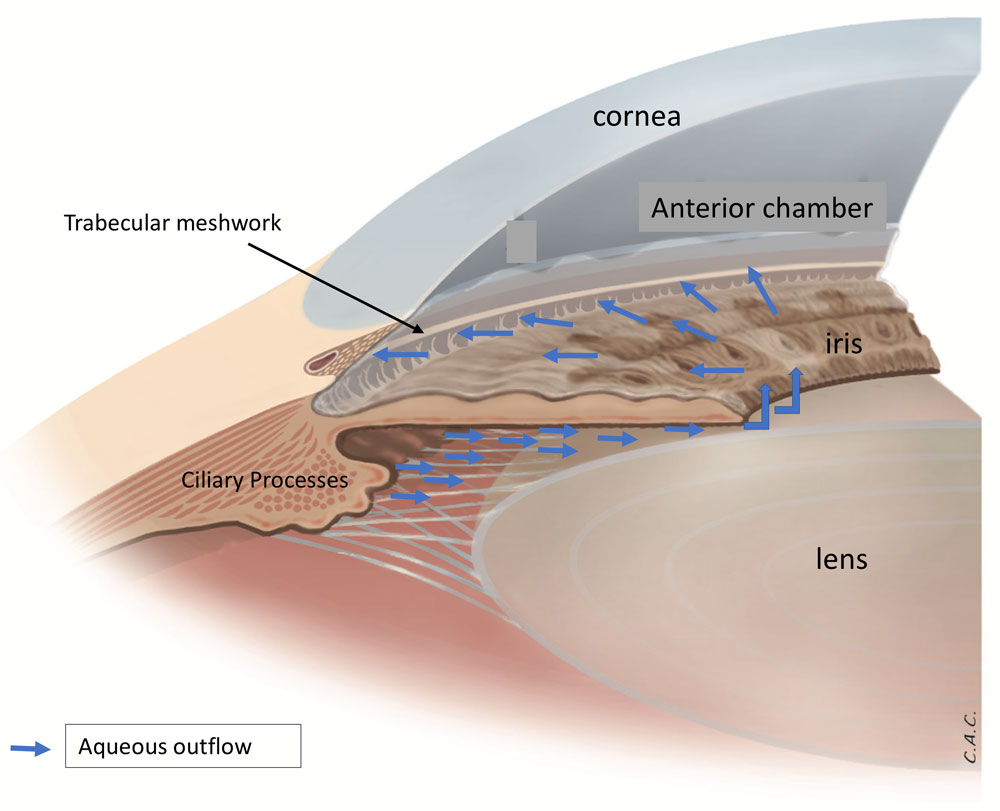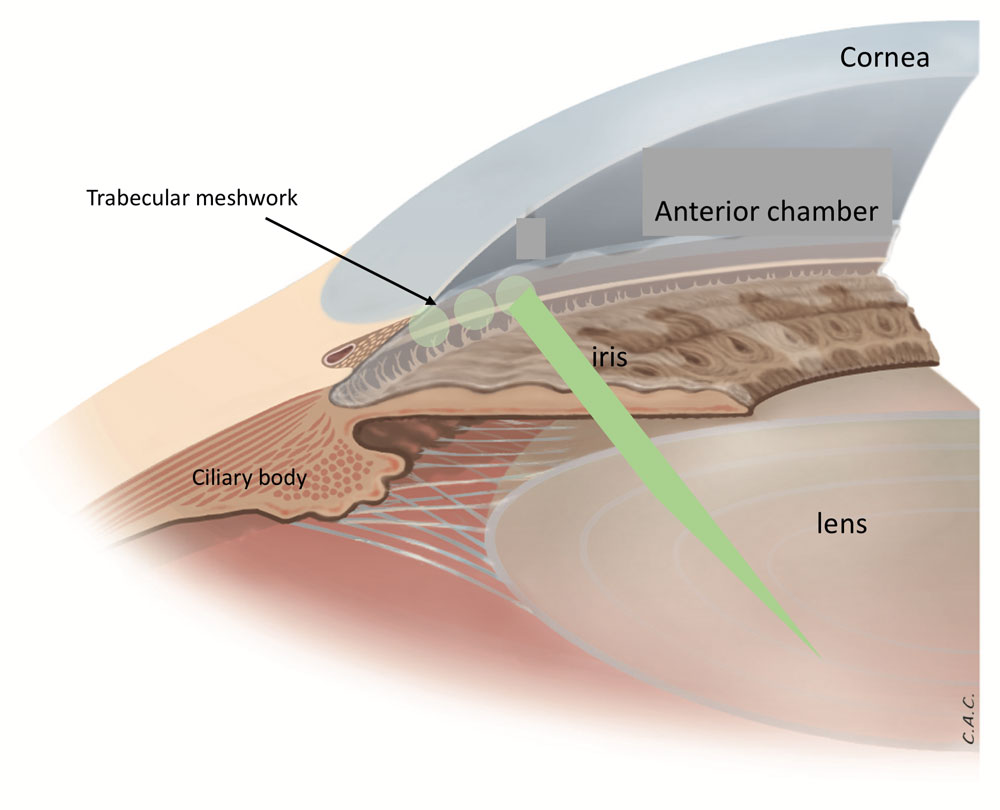Glaucoma is defined as a progressive disorder of the optic nerve that is usually caused by elevated intra-ocular pressure. This insidious disease is predicted to affect nearly 4 million Americans by 2030. The end result of glaucoma, if left untreated, is blindness. Thankfully, if diagnosed early, there are multiple medical and surgical therapies that can reduce eye pressure to a safer level and can arrest the progress of glaucoma and preserve sight. These treatments include eye drops, surgery and Selective Laser Trabeculoplasty (SLT).
The anterior chamber of the eye is filled with clear, aqueous fluid that is produced by cells in the tissues posterior to the pupil. The fluid circulates through the pupil to nourish the cells in the anterior portion of the eye, and drains out of the eye through pores in the anatomic angle formed by the insertion of the iris into the wall of the eye (see diagram below). The pressure in the eye is the result of the balance between the production of fluid and the drainage of that fluid from the eye. In glaucoma, the eye pressure is typically elevated due to an increased resistance to fluid outflow through these drainage pores. The result of elevated intra-ocular pressure (IOP) over time is steady destruction of the optic nerve—the conduit that connects our eye to our brain and allows us to see the wonders of our visual world. As the nerve tissue withers away, our vision withers away.

The goal of treating glaucoma is to reduce the IOP to a level that is healthy for the optic nerve. SLT is a safe and effective procedure where an Ophthalmologist treats the drainage pores in the front chamber of the eye with laser energy in order to stimulate a physiologic process which causes those pores to widen, thus allowing fluid to drain out more easily (see diagram below). The treatment is relatively painless and takes about five minutes. Many eye MDs will ask their patients to use an anti-inflammatory eye drop for a few days following the surgery to improve the results.

SLT is successful nearly 80% of the time and can reduce the eye pressure by 20-30%. Laser surgery can be performed as initial therapy for many forms of glaucoma, or it can be used as an adjunct to eye drops or other surgical glaucoma treatments. It can also be used as an alternative to eye drops when patients experience intolerance of eye drop side effects, or challenges with medication compliance. If the surgery is effective, the pressure can remain reduced for a period of one to five years. The treatment can be repeated if the pressure starts to rise again, but the laser tends to be less successful the more times it is performed on an eye.
Early diagnosis and aggressive treatment are keys to improving outcomes in patients with glaucoma. At Eye Associates Northwest, we have multiple providers who specialize in the medical and surgical management of glaucoma—including SLT. If you have glaucoma and are interested in learning whether this procedure can help you, please feel free to contact us to schedule a consultation.
